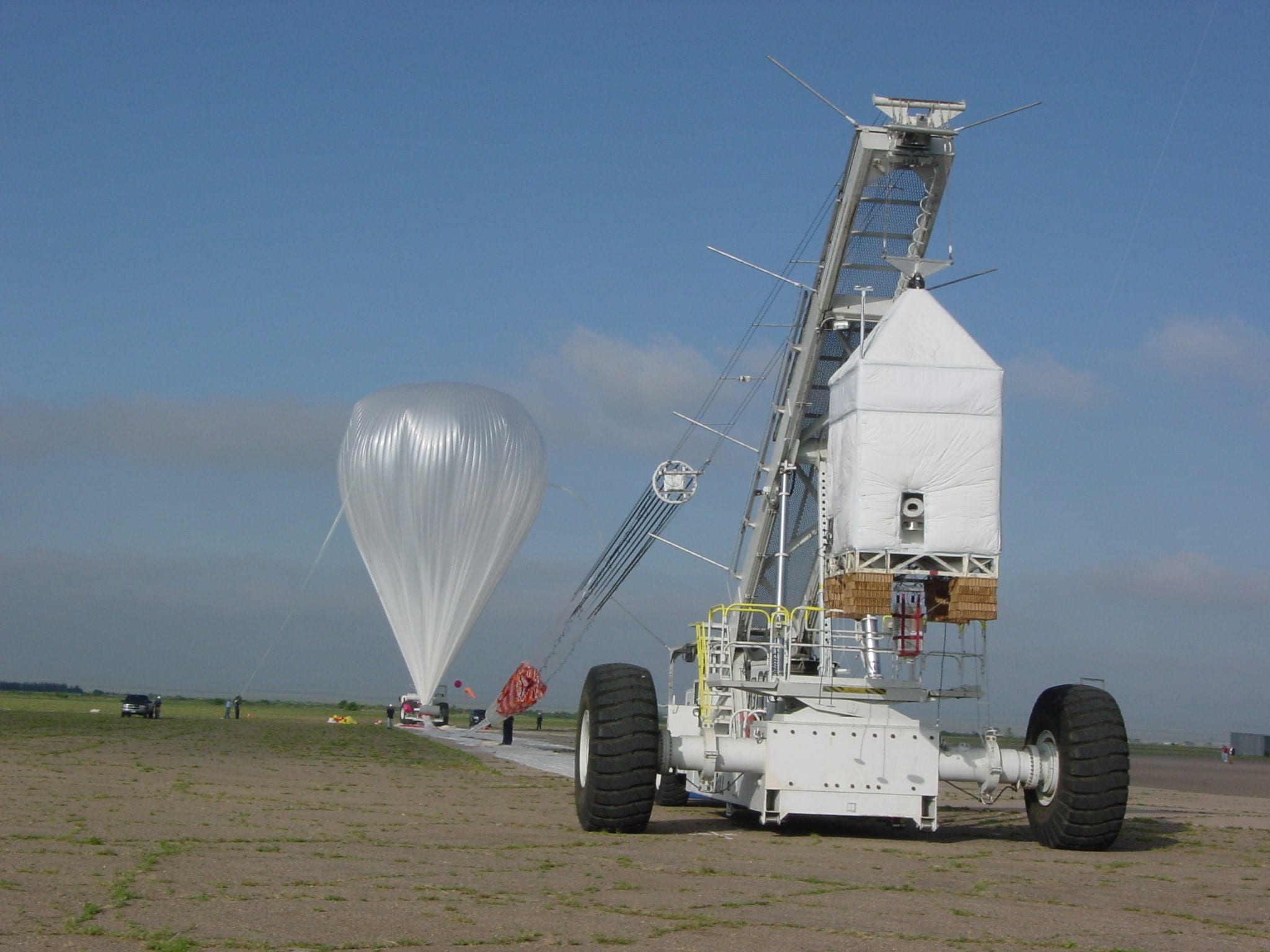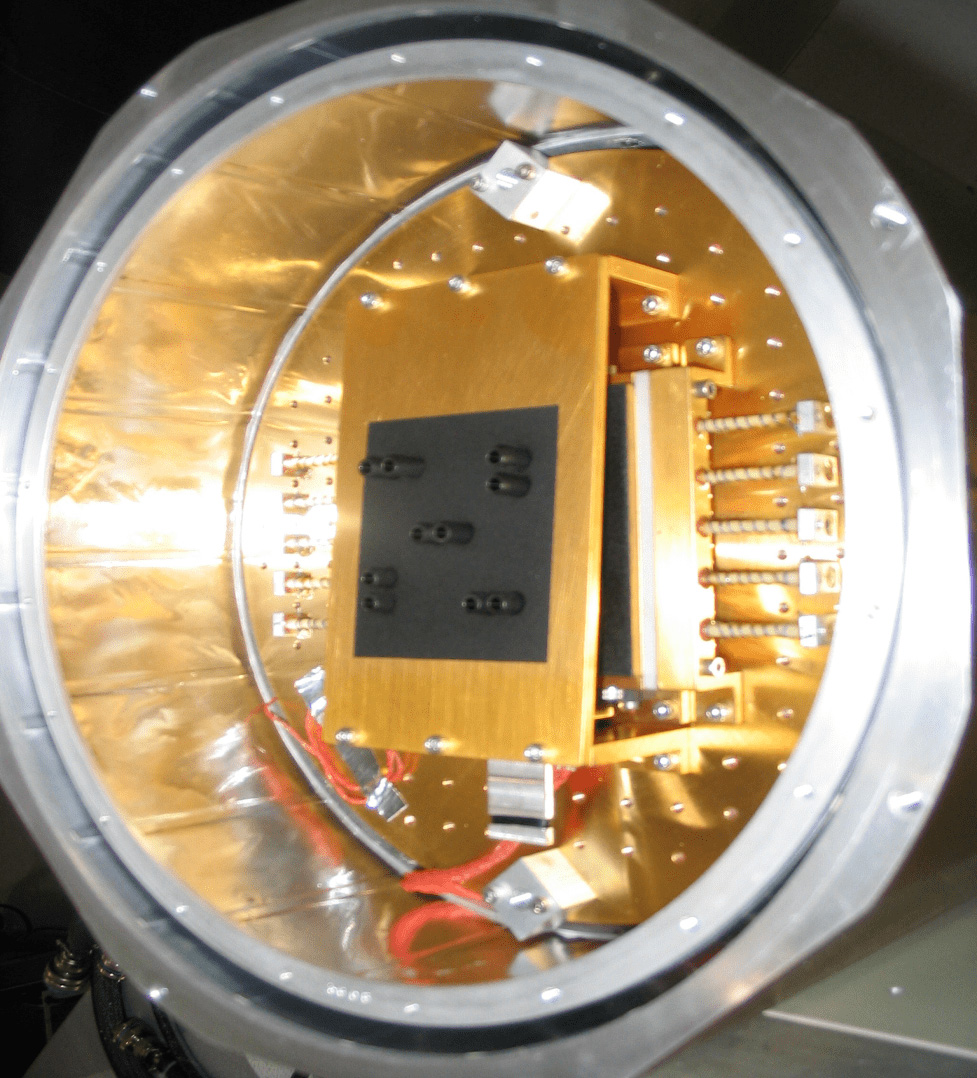A FIRST for the Far-Infrared

FIRST on the flight line at Fort Sumner, New Mexico, just prior to launch on its technology demonstration flight in June 2005. (Image credit: M. Mlynczak)
The Far-Infrared Spectroscopy of the Troposphere (FIRST) instrument, an early airborne precursor to the Climate Absolute Radiance and Refractivity Observatory (CLARREO) mission concept, was demonstrated in 2005 on a high-altitude research balloon and provided the first high-resolution measurement of the complete infrared emission spectrum of the Earth. The demonstration included the far-infrared region from 15 to 100 microns – well beyond the range of existing sensors at the time – that contains over 50% of Earth’s longwave radiation and provides critical data for global change studies.
The balloon and payload was launched from the National Scientific Balloon Facility in Ft. Sumner, NM, and provided data from 90,000 feet for 4.5 hours, meeting the test objectives. During this time, the Aqua spacecraft (containing the AIRS instrument, which measures infrared emissions from 4 to 15 microns) passed overhead. The FIRST project team combined the AIRS data with FIRST observations to provide the first-ever complete infrared emission spectrum of the Earth.

The FIRST focal plane showing the 10 Winston cones used to maximize the collection of light from the atmosphere onto the silicon bolometer detectors. (Image credit: M. Mlynczak)
FIRST was reconfigured in 2007 to operate as a ground-based instrument and participated in two science campaigns. In 2009, the Department of Energy’s Radiative Heating in the Under-explored Bands Campaign (RHUBC-II) campaign staged FIRST at an altitude of 17,500 feet above sea level in the Atacama Desert of Chile. And in 2012, FIRST was installed on Table Mountain, California, at 7,700 feet above sea level. From these altitudes, FIRST investigated climate processes in the middle and upper atmosphere that are hidden from ground observations due to opaque water vapor spectral absorption.
The FIRST instrument was developed under the Instrument Incubator Program and designed jointly by the Space Dynamics Laboratory of Utah State University, NASA Langley Research Center, and the Harvard-Smithsonian Center for Astrophysics.